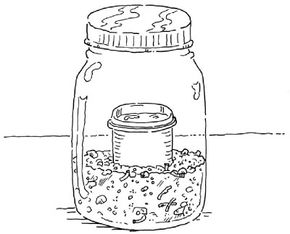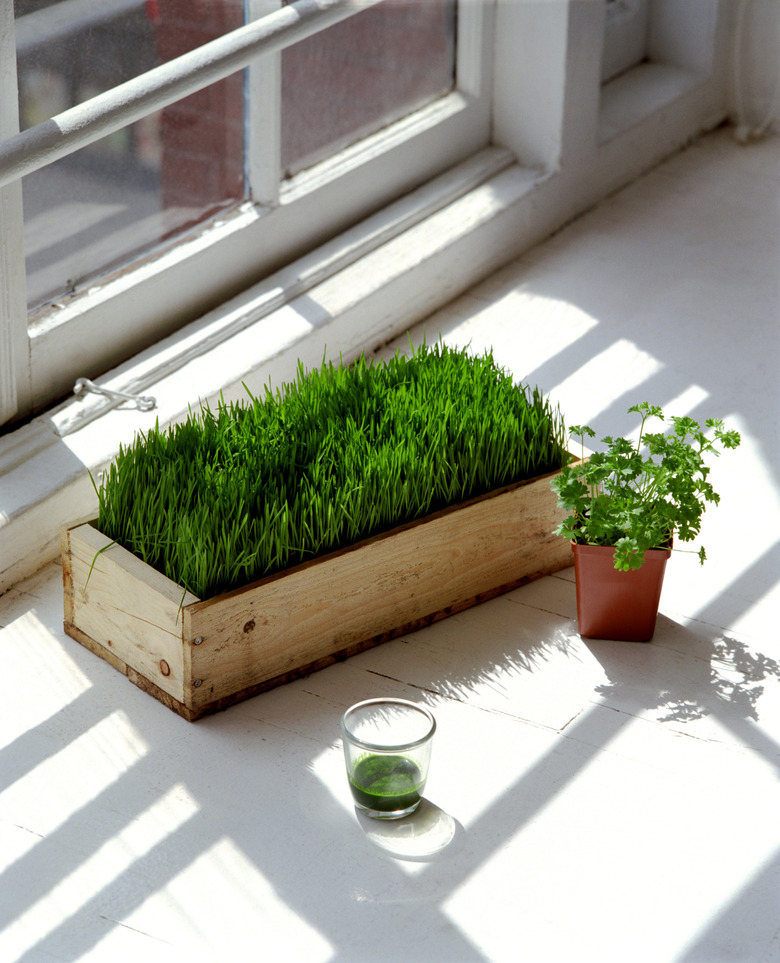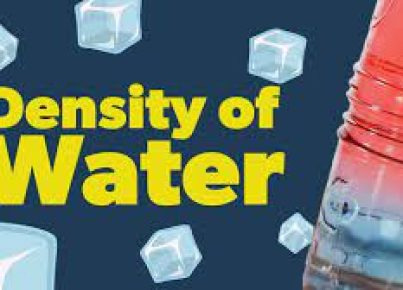Advertisement

Science Projects for Kids: Soil Experiments
- Share Content on Facebook
- Share Content on LinkedIn
- Share Content on Flipboard
- Share Content on Reddit
- Share Content via Email

Science projects for kids: soil experiments are great educational tools that keep children engaged and teach lasting lessons. Soil experiments teach kids about the environment through active participation.
These soil experiments for kids are inexpensive and easy science projects, perfect for a classroom lesson or summertime fun. Inspire kids to learn more about the earth with these innovative soil experiments.
On the following pages, you'll learn about science projects for kids: soil experiments that make ideal science projects for kids.
Dirt Discovery
Teach kids how to examine different layers of soil with this science project. Dirt Discovery is a soil experiment that teaches kids how to separate layers of earth.
Who Needs Dirt?
This easy science project for kids is both fun and productive. Find out how to grow a sweet potato plant without water in this soil experiment.
Lowdown on Dirt
Get directions for a science experiment that teaches kids how to determine soil quality. Find out about the Lowdown on Dirt, an easy soil experiment.
Look Mom, No Dirt!
Just how many plants can you grow without water? Find out when you perform Look Mom, No Dirt!
Down and Dirty
Learn how to find creatures that live in dirt using lime-water during this soil experiment. Read about this science project for kids.
Dirt Discovery encourages kids to shake it up and learn about soil composition. Make a Dirt Discovery on the next page of science projects for kids: soil experiments.
Looking for more science projects to do with your kids? Try:
- Science Projects for Kids: The Moon
- Science Projects for Kids: Classifying Plants
- Science Projects for Kids: Light and Heat

Dirt Discovery is a science project that teaches kids about soil composition. There's more to dirt than you think! Find out what it's made of.
What You'll Need:
- Waterproof table covering
- Jar with lid
- Pitcher of water
- Paper towels
- Magnifying glass
How to Conduct the Dirt Discovery Science Project: Step 1: Cover your work surface. Fill a jar halfway with dirt. Add water nearly to the top of the jar. Put the lid on, and tighten it securely.
Step 2: Shake the jar vigorously for a half a minute, and then set it down. Let the jar stand until the dirt and water settle. The soil will settle into layers.
Step 3: Observe the layers in the jar, and see what you can tell about them. How many layers are there? Which layer is made of the biggest particles? Which is made of the smallest? Can you guess why?
Step 4: To further examine the different layers and what they are made of, you can sort out the soil materials and examine them. Use a spoon to skim off the objects floating in the water. Place them on a paper towel.
Step 5: Then carefully pour off the water on the top and scoop out the grains of the next level onto another paper towel. Do the same if there is another level.
Step 6: After each layer has been placed onto towels, they can be examined with the magnifying glass. What else can you tell about the different layers after further examination?
Step 7: You can also do this experiment with dirt you have collected from different areas and compare your findings. Draw pictures of each jar full of soil after you have shaken it and the dirt has settled to make picture comparisons.
Who Needs Dirt? Your kids might be asking this question after you teach them how to grow a sweet potato plant in nothing but water. Read about this science project on the next page of science projects for kids: soil experiments.
Who Needs Dirt? In this science project, you can teach kids to grow a sweet potato plant without soil -- all you'll use are toothpicks and water.
How to find out Who Needs Dirt?
- Sweet potato
Step 1: Insert three toothpicks around a sweet potato near the large end so they stick out to the sides in different directions.
Step 2: Fill a glass most of the way with water. Put the sweet potato into the glass small-end first, and rest the toothpicks on the rim so they hold up the sweet potato. There should be enough water in the glass so that about 3/4 of the sweet potato is covered.
Step 3: Put the jar in a sunny spot for several days. Add water as needed. Soon you will have a beautiful vine growing from the top of the potato.
Lowdown on Dirt is a science project that teaches kids to compare different kinds of soil and determine which is better. Read about Lowdown on Dirt on the next page of science projects for kids: soil experiments.
Usually you put a plant into soil to make it grow, but you can grow some plants without soil. When the sweet potato plant was growing with its roots in the water and its leaves in the sun, it produced food through photosynthesis and the stored carbohydrates in the potato. This stored food in the sweet potato provided the energy needed to grow a new plant.
The Lowdown on Dirt is a science project that teaches kids about soil quality. When it comes to supporting plant life, not all dirt is equal.
- Garden soil
- Small flowerpots with saucers
- Tall stakes
- Pencil or pen
- Paper (graph paper optional)
How to get the Lowdown on Dirt: Step 1: Look in your yard for areas where plants grow poorly. Is the soil trampled and hard? Is the soil soft and loose where plants grow well? Look for sandy or heavy, clay-like soil.
Step 2: Gather samples of different soils and fill a flowerpot with each kind. Label your flowerpots: "Hard, baked soil near the sidewalk," "Loose, fluffy soil from the flower bed," etc.
Step 3: Water the pots, then plant two or three bean seeds in each. Put a stake in each pot for the beans to climb. Keep the pots moist (but not soggy) while the beans sprout.
Step 4: Notice which beans sprout first. Measure the height of the plants every few days until the beans flower. Keep a chart. Which soil was the best?
Look Mom, No Dirt! is a science project that teaches kids to grow plants without soil. Find out how to learn about plant growth on the next page of science projects for kids: soil experiments.
Look Mom, No Dirt! is a science project that teaches kids just how many plants can be grown without dirt. Believe it or not, while most plants in nature grow in soil, it's possible to grow plants without it.
- Sphagnum moss
- Bean or corn seeds
How to conduct the Look Mom, No Dirt! science project:
Step 1: Put a piece of wire mesh (like a piece of old screen) in the bottom of an empty aquarium. Bend the ends of the mesh so that it makes a shelf that is several inches above the bottom of the aquarium.
Step 2: Mix plant food into some water, and pour the water into the aquarium. The water level should be just below the mesh.
Step 3: Put some sphagnum moss on top of the mesh. Then sprinkle some bean or corn seeds onto the moss, and water them well. Keep the seeds watered. Even though there's no soil, the seeds will sprout and send roots down through the mesh into the water that contains plant food.
Down and Dirty is a science project that teaches kids about all the creatures that live in soil. Read about Down and Dirty on the next page of science projects for kids: soil experiments.

Down and Dirty is a science project that teaches kids about all the creatures that live in the dirt. Soil contains microscopic animals that breathe.
- Jar with a lid
- Limewater (available at a drugstore)
- Small container
How to conduct the Down and Dirty experiment: Step 1: Drop a large handful of garden soil into the bottom of a big, empty jar. Pour some lime-water into a small container. Note what the lime-water looks like.
Step 2: Set the container of lime-water, uncovered, inside the large jar so it rests on top of the soil. Tightly screw on the lid of the large jar, and leave it undisturbed.
Step 3: In 2 or 3 days, look at the lime-water to see if it has changed in any way.
ABOUT THE PROJECT DESIGNERS:
Lowdown on Dirt by Maria Birmingham, Karen E. Bledsoe, and Kelly Milner Halls
The soil contains many microscopic animals. These animals take in oxygen and release carbon dioxide as a waste product, just as you do when you breathe. The lime-water turned a milky color because the carbon dioxide produced by the organisms in the soil combined with the lime-water to produce chalk. Your garden soil may contain bacteria, protozoans, and threadlike worms called nematodes.
Please copy/paste the following text to properly cite this HowStuffWorks.com article:

- All About Soil
- Fun with Soil
- Soil Experiments
- Career Exploration
- Soil In Your Community
Soil Experiments and Hands-on Projects
Use grape Kool-Aid to learn how "Soil is a Filter" and how important soil is for clean drinking water.
Soil Texture Lesson and Activity - Developed by SSSA, this lesson and activity introduces the concept of soil texture and particles sizes and contains an activity on Soil Texture (from New Mexico State Univerity)
Soil Color Lesson - Developed by SSSA, this lesson and activity introduces the concept of soil colors and contains an activity on making Soil Crayons (from USDA).
Particle Size Using water, soda bottles, and soil, students can use "the bigger they are, the faster they fall" principle to find out whether sand, silt, or clay is made of larger particles.
Make your own profile - Students create a model of a soil profile using card stock, carpet tape, and soil samples from different horizons.
Paint with Soil Instructions for how to make paints of wondrous colors using soil. (Note: To get soils of different colors it is often necessary to dig below the topsoil in several locations.)
Soil Aggregates Activity uses glass jars, water, hardware cloth and soils to demonstrate how organic matter helps stabilize soils.
Berlese Funnel - find out how many bugs and other critters live in your soil.
Soil Facts – USDA-NRCS K-12 Lessons Definitions of soil and soil survey, information on careers in Soil Science, and information on soil formation and classification.
Soil Quotations – See quotes about soil, compiled by SSSA. The importance of soil to life and culture is illustrated by quotes from people like Leonardo DaVinci, Franklin Roosevelt, and the Indigo Girls.
Dirt Pudding – Dr. Dirt's K-12 Teaching Resources and Activities An edible soil recipe to teach about soil horizons. With patience and creativity different types of soil pedons can be made, as shown in the pictures.
Soil as a Sponge – Dr. Dirt's K-12 Teaching Resources and Activities A sponge in water is used to demonstrate many types of soil water interactions.
Perkin' Through the Pores – Utah AITC Dirt: Secrets in the Soil Lessons and activities about how different soils let water move through them and hold onto water differently. Designed for elementary students, but many parts appropriate for middle school.
Contact Us / About Us
5585 Guilford Road Madison, WI 53711-5801 Phone: 608-273-8080 | Fax: 608-273-2021
Click here to learn more about SSSA…

Home | About Us | All About Soil | Fun with Soil | Soil Experiments | Soil Games | Career Exploration | Soil In Your Community Contact Us | Privacy Policy | Terms of Use
© 2024 Soil Science Society of America
Links & Resources
- Soils4Teachers.org - K-12 Soil Science Teacher Resources
- Science Fair Info
- Ask a Soil Scientist
- State Soils
- Learn all about Animals too!

Science Fair Project For Testing Different Soils With Plant Growth

Science fair projects use a student's creativity to teach scientific methods. While the possible projects are almost limitless, a straightforward project, such as testing soil types' impact on plant growth, will provide clear, observable results for the student to study.
Choosing Your Soils
Soils are a mixture of three particles – sand, silt and clay – along with organic matter, water and air. Soil differences are the result of different mixtures of these particles. Since this project will test the growth in different soil types, choose at least two soils with distinct differences. For example, choose one soil with high sand content and another with high clay content. This will make the differences between the soils easier to spot.
The Experiment
Fill paper cups or other growing vessels with the soils, marking each vessel to keep the soil types separate. Plant the same type of seeds in each vessel. The seeds should be planted at the same depth and spaced the same in each vessel. Follow the seed packet's instructions to properly water and care for the plants, ensuring you treat each vessel in the same way so that plant differences are not the result of differences in your care of each vessel.
What to Measure
The purpose of this experiment is to observe differences between the plants as they grow in different soils. This can be measured in any way appropriate for your plant. For example, you could measure the height, width, number of leaves, how fast the plants grow, number of flowers or yield of seeds or fruits. The results of your experiment will be clearer if you use objective measurements, rather than subjective descriptions of the plants.
Presenting Your Results
Science fairs may prescribe a required format for presentation of your results. For example, you may be required to present data tables or graphs to support your conclusion instead of simply reporting which soil type was best for your plants. Therefore, it is important for you to keep accurate records throughout your experiment for later inclusion in your presentation. Graphs, descriptions of your methods and pictures will help the judges and teachers understand your experiment and the level of work you put into your project.
- University of Illinois Extension: Natural Resources, the Environment and Ecosystems: Soil and Ecosystems
- United States Department of Agriculture: Agricultural Ideas for Science Fair Projects: Environmental Sciences
- Selah School District: The Effect of Different Potting Soil Mixtures on Radish Growth
Cite This Article
J.D., Heather Frances. "Science Fair Project For Testing Different Soils With Plant Growth" sciencing.com , https://www.sciencing.com/science-fair-project-testing-different-soils-plant-growth-12062125/. 24 April 2017.
J.D., Heather Frances. (2017, April 24). Science Fair Project For Testing Different Soils With Plant Growth. sciencing.com . Retrieved from https://www.sciencing.com/science-fair-project-testing-different-soils-plant-growth-12062125/
J.D., Heather Frances. Science Fair Project For Testing Different Soils With Plant Growth last modified August 30, 2022. https://www.sciencing.com/science-fair-project-testing-different-soils-plant-growth-12062125/
Recommended

Lessons and Activities
Soils by subject, grade level, type, and standards.
Lessons & Activities Search
We've curated a collection of lessons, hands-on activities, labs, readings, and more - all about soils and topics related to soils - and in a searchable database. Some are posted directly by SSSA others we have reviewed and recommend. While they are not officially endorsed, we found them to have high quality materials for lessons and activities at different grade levels. And, you can save items of interest to a custom binder.
Teacher's Guide for Soil! Get the Inside Scoop!
We have developed a teacher's guide for use in the classroom based on the book, S oil! Get the inside Scoop! The guide includes objectives, glossary, test questions/worksheets, and presentations - complete with teaching notes! Learn more about the Teacher's Guide for Soil! Get the Inside Scoop!
International Year of Soils Video Collection
We have also compiled a series of 12 short videos which connect the diverse value of soils to our natural environment and society. Learn more on the International Year of Soils video page .
Have you designed an awesome lesson/activity?
Submit it to be reviewed and vetted by our scientists. Then we'll publish it so you can share your ideas with teachers around the word. Submit your lesson plan here.
- Ask A Scientist
- Soil Store

Know Soil, Know Life
For high school and introductory college students, gain a foundation about the world of soils with our book - Know Soil, Know Life .
Visit the Society Store to learn more and purchase your copy today
- WordPress.org
- Documentation
- Learn WordPress
- Members Newsfeed
The Science of Soil: 20 Activities for Elementary Kids
- Science Education

Introduction
The soil beneath our feet is a fascinating and complex world that deserves exploration and understanding. Teaching children about the science of soil can inspire a sense of wonder and connection to the natural environment, while also developing important scientific concepts. This article will provide you with 20 engaging soil-related activities for elementary-aged kids to enjoy and learn from.
1. Soil texture test: Have the children find samples of different soil types and use their senses to describe and classify them based on texture.
2. Worm observation: Set up a worm habitat in a clear container, allowing children to observe worm behavior, teaching them the essential role they play in breaking down organic matter.
3. Soil erosion experiment: Using water, demonstrate how easily soil can be eroded by flowing water and discuss ways to prevent soil erosion.
4. PH test: Perform a pH test on different soil samples and discuss how it affects plant growth.
5. Compost creation: Teach children about composting by having them create their own composting pile using food scraps, leaves, and other organic materials.
6. Soil layers: Create a hands-on activity that illustrates the different layers of soil using food items like cake or pudding.
7. Seed germination test: Plant seeds in various types of soil samples to see which environments allow for the best seed germination rates.
8. Soil art: Have children use soil samples as natural paint, creating art while learning about the colors and textures found in different soils.
9. Fossil formation demonstration: Teach children about fossil formation by creating clay fossils and discussing how fossilized plants can be found in layers of sedimentary rocks.
10. Microorganisms study: Introduce children to the microorganisms living in the soil by conducting microscopic observations of samples.
11. Decomposition race: Add various organic materials to different containers of soil and track their decomposition over several weeks.
12. Soil filtering: Demonstrate the ability of soil to filter water by passing dirty water through a layered soil sample.
13. Root observation: Plant seeds in transparent containers so the children can observe how roots grow through different layers of soil.
14. Soil profile display: Have students create a three-dimensional display of a soil profile, including horizons and features.
15. Soil habitat diorama: Encourage children to design and create dioramas representing various organisms that live in the soil.
16. Mineral identification: Teach children about different minerals found in soils and their importance.
17. Rock sorting: Collect rocks from local soils and have students sort them based on size, shape, or type.
18. Make mud bricks: Use soil and water to make mud bricks, teaching children about the history of construction using natural materials.
19. Soil-inspired stories or poems: Encourage creative writing by having students compose stories or poems based on a prompt related to soil.
20. Field trip: Organize a field trip to a local farm, botanical garden, or nature reserve, where children can learn about different types of soil and plants firsthand.
Teaching elementary-aged kids about the science of soil encourages curiosity about the world around them while providing valuable hands-on learning experiences. These 20 activities offer exciting ways for children to explore this essential element of our ecosystem, laying the foundation for a life-long appreciation of nature and scientific discovery.
Related Articles

Electricity is a fundamental form of energy that powers the modern world.…

This year's National Science Week is set to captivate young minds with…

Water density is a fascinating subject for science experiments, especially when introducing…

Pedagogue is a social media network where educators can learn and grow. It's a safe space where they can share advice, strategies, tools, hacks, resources, etc., and work together to improve their teaching skills and the academic performance of the students in their charge.
If you want to collaborate with educators from around the globe, facilitate remote learning, etc., sign up for a free account today and start making connections.
Pedagogue is Free Now, and Free Forever!
- New? Start Here
- Frequently Asked Questions
- Privacy Policy
- Terms of Service
Are you sure you want to delete post?
This post cannot be restored anymore.
- Registration
Don't you have an account? Register Now! it's really simple and you can start enjoying all the benefits!
We just sent you an Email. Please Open it up to activate your account.
I allow this website to collect and store submitted data.

IMAGES
VIDEO
COMMENTS
These soil experiments for kids are inexpensive and easy science projects, perfect for a classroom lesson or summertime fun. Inspire kids to learn more about the earth with these innovative soil experiments.
What filters ground water and supports most of our food production, not to mention the production of building materials and paper? The answer, often overlooked, is: soil. With this project you can get all the dirt on soil formation, soil horizons, and the composition of different soils. Read more
Soil Experiments and Hands-on Projects Use grape Kool-Aid to learn how "Soil is a Filter" and how important soil is for clean drinking water.
Science fair projects use a student’s creativity to teach scientific methods. While the possible projects are almost limitless, a straightforward project, such as testing soil types’ impact on plant growth, will provide clear, observable results for the student to study.
We've curated a collection of lessons, hands-on activities, labs, readings, and more - all about soils and topics related to soils - and in a searchable database. Some are posted directly by SSSA others we have reviewed and recommend.
Teaching children about the science of soil can inspire a sense of wonder and connection to the natural environment, while also developing important scientific concepts. This article will provide you with 20 engaging soil-related activities for elementary-aged kids to enjoy and learn from.